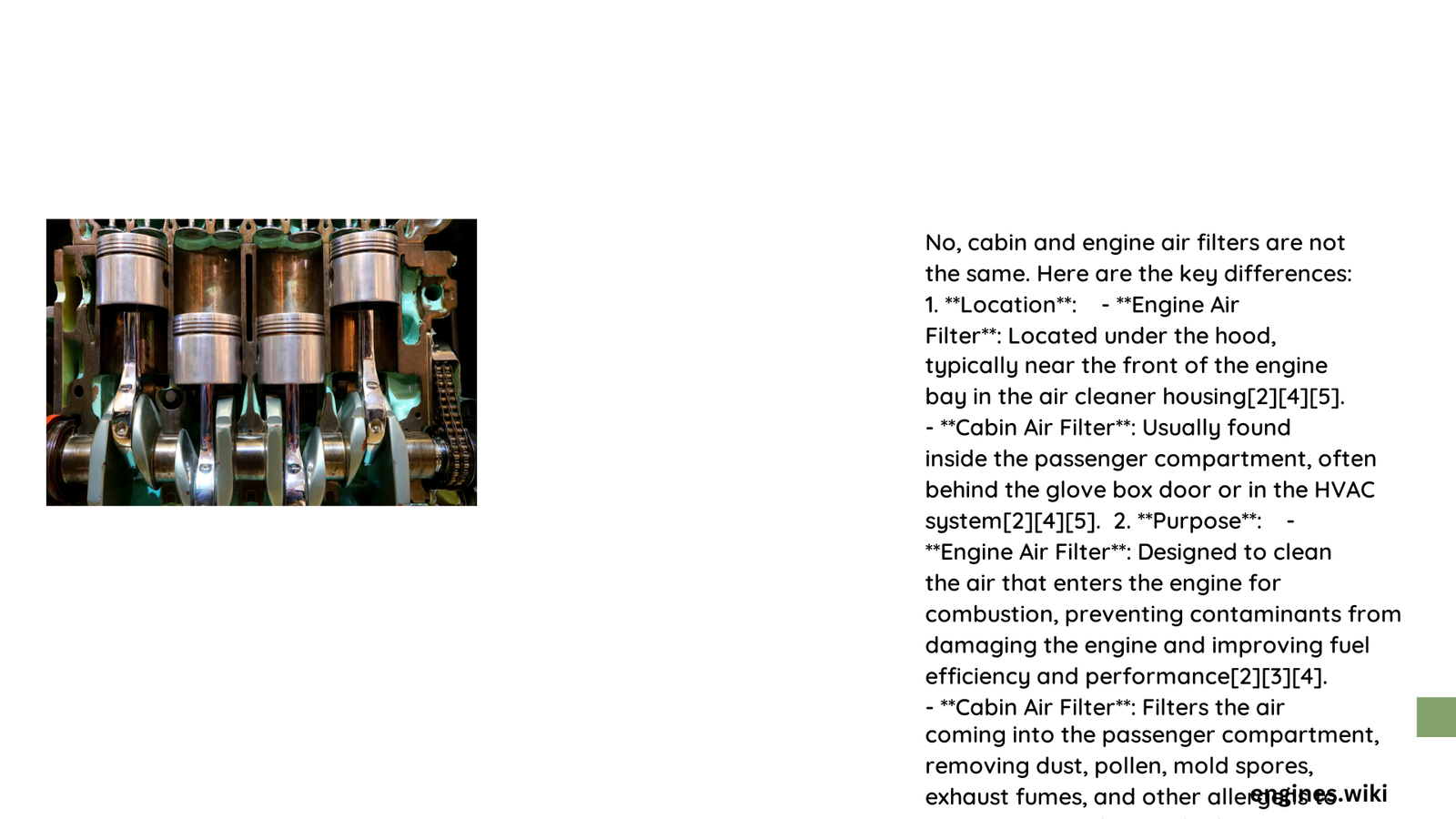Vehicle air filtration is a complex system where cabin and engine air filters play distinct yet crucial roles in protecting both passengers and mechanical components. While both filters remove contaminants, they serve fundamentally different purposes in a vehicle’s ecosystem, targeting specific areas with unique filtration requirements and design specifications.
What Makes Cabin and Engine Air Filters Different?
Are Cabin and Engine Air Filters Located in the Same Place?
Cabin and engine air filters are strategically positioned in completely different vehicle locations:
- Engine Air Filter Location:
- Typically under the hood
- Near air intake system
-
Larger and more robust design
-
Cabin Air Filter Location:
- Inside passenger compartment
- Behind glove box
- Smaller and more compact
What Specific Particles Do These Filters Capture?
| Filter Type | Particles Captured | Filtration Goal |
|---|---|---|
| Engine Air Filter | Dust, dirt, sand, large debris | Protect engine components |
| Cabin Air Filter | Pollen, microscopic pollutants, odors | Ensure clean breathing environment |
How Do Filtration Mechanisms Differ?
Engine Air Filter Mechanism:
– Designed for high-volume airflow
– Handles larger, more abrasive particles
– Prevents direct contamination of combustion chambers
– Supports optimal engine performance
Cabin Air Filter Mechanism:
– Focuses on fine particle removal
– Includes activated carbon layers
– Neutralizes odors
– Protects respiratory health
What Are Replacement Intervals for Each Filter?
- Engine Air Filter:
- Replacement every 30,000-45,000 miles
- More frequent in dusty environments
-
Critical for maintaining engine efficiency
-
Cabin Air Filter:
- Replacement every 15,000-20,000 miles
- Depends on driving conditions
- Impacts interior air quality
Can Neglecting These Filters Cause Damage?
Engine Air Filter Consequences:
– Reduced fuel efficiency
– Potential engine performance degradation
– Increased risk of internal component wear
– Higher maintenance costs
Cabin Air Filter Consequences:
– Decreased HVAC system performance
– Reduced air quality
– Potential respiratory irritation
– Unpleasant interior odors
Expert Maintenance Tips
- Inspect filters during routine service
- Check manufacturer recommendations
- Consider driving environment
- Use high-quality replacement filters
Technical Insights
While cabin and engine air filters might seem similar, they represent specialized filtration technologies:
- Engine filters prioritize mechanical protection
- Cabin filters emphasize human health and comfort
- Both are critical for vehicle longevity and performance
Cost Considerations
- Engine Air Filter: $10-$80
- Cabin Air Filter: $15-$50
- Professional installation may increase expenses
Final Technical Assessment

Cabin and engine air filters are not the same. They represent specialized filtration systems with unique designs, locations, and purposes. Understanding their differences helps vehicle owners maintain optimal performance and air quality.
